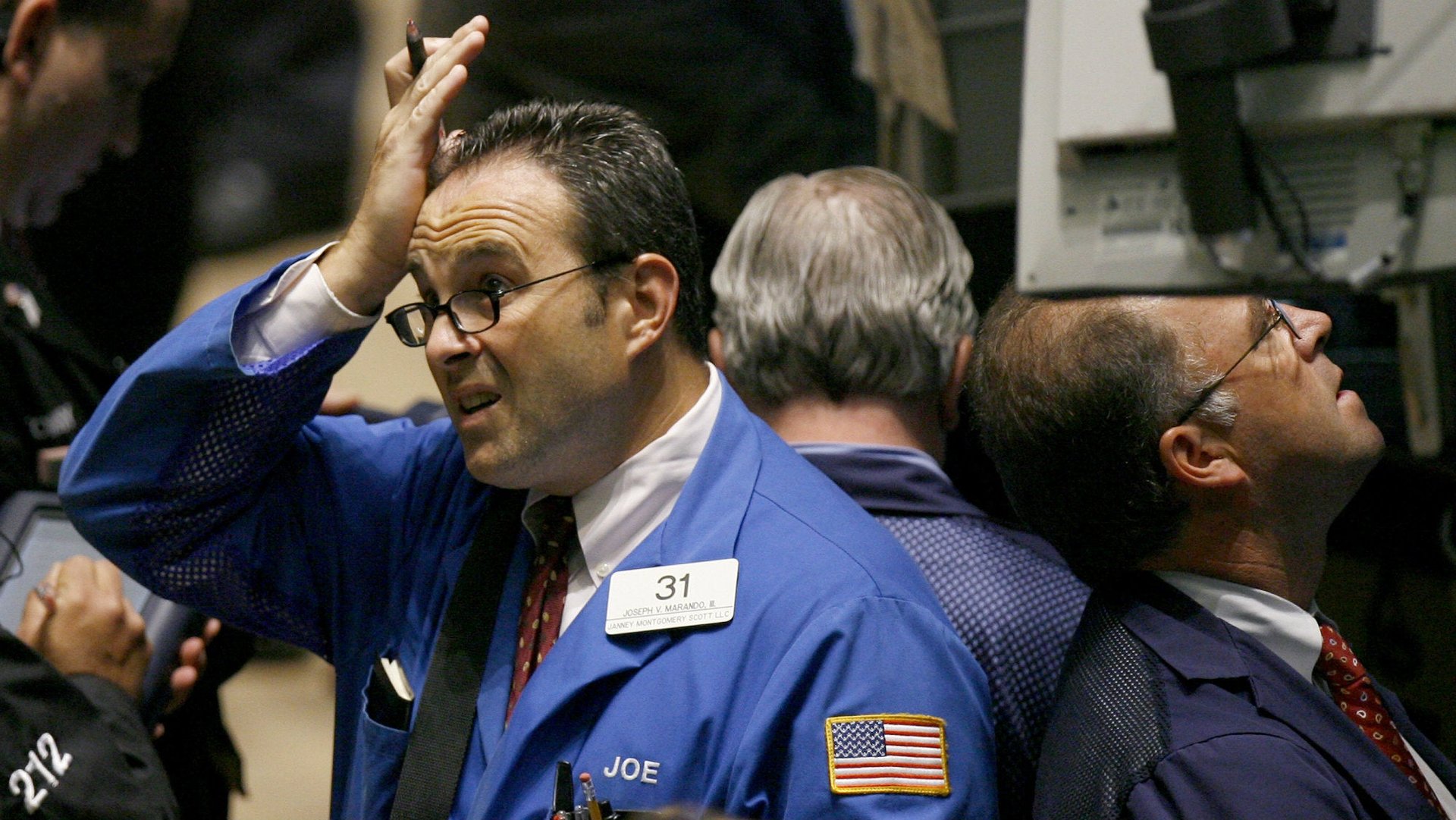Ten years ago today, people weren’t that worried about impending financial doom
If we knew then what we know now…


If we knew then what we know now…
Ten years ago today, all was not well with the global financial system. On Aug. 9, 2007 BNP Paribas froze more than $2 billion in funds, barring investors from withdrawing their money due to a “complete evaporation of liquidity in certain market segments.”
This marked the beginning of a dangerous new phase in what eventually developed into the worst economic downturn since the Great Depression. Central banks scrambled to prop up money markets, banks, and other investors rushed to dump subprime-laced securities, and trust between market players completely evaporated. About a year later, Lehman Brothers collapsed and then things got really scary.
But back in August 2007, it wasn’t clear what was coming. (Indeed, the boss of BNP Paribas said that the bank’s exposure to toxic subprime assets was “absolutely negligible” just days before it was forced to freeze billions worth of funds.) A scan of news reports at the time captures a general sense of unease, but also reveals how the financial crisis caught many people off-guard in the markets and said little to the general public, who were trying to make sense of it all.
“Who knows where the subprime story is going to pop up again.”
“We’re in a volatile place, and there’s an overreaction to the news and rumors here that’s feeding into that volatility.”
”We remain of the view that issues of the market remain very much limited to a certain part of it.”
“The longer-term fear is that these liquidity issues could spill into the wider economy… the prompt intervention of central banks puts off the day of reckoning.”
“Pay attention here. This is either a false alarm or a pivotal moment in history.”
One of the most remarkable commentaries—in retrospect—about the burgeoning crisis came from Bear Stearns chief economist David Malpass, writing for the Wall Street Journal (paywall) on Aug. 7, 2007, days before the BNP fund freeze. “Don’t Panic About the Credit Market,” read the op-ed’s headline, but Bear Stearns itself would succumb to the credit crunch about six months later, sold in a panicky fire sale to JPMorgan. Some of his observations:
Of course, sellers of both houses and bonds would like more froth in their markets. But buyers, and likely the economy as a whole, will probably benefit over time from the wrenching return to more normal market conditions.
[…]
Housing and debt markets are not that big a part of the U.S. economy, or of job creation. It’s more likely the economy is sturdy and will grow solidly in coming months, and perhaps years.
[…]
While it’s frowned upon to look for a silver lining when markets tumble and painful losses accumulate, the housing- and debt-market corrections will probably add to the length of the U.S. economic expansion.
Last week, Malpass was confirmed by the US senate to serve as Undersecretary for International Affairs at the Treasury Department.